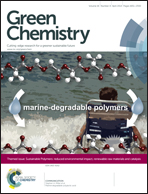Matrices from vegetable oils, cashew nut shell liquid, and other relevant systems for biocomposite applications
Abstract
The partial replacement of petroleum-derived plastics and composites by novel bio-based materials from inexpensive, renewable, natural resources has the potential to greatly impact the plastics, coatings, and composites industries. Natural starting materials are usually abundant and renewable on a time scale many orders of magnitude smaller than petroleum. These characteristics, in combination with good mechanical properties, make the design of bio-based composites an interesting strategy for lowering the environmental impact of the plastics and composites industries while maintaining economical competitiveness. The present review will focus on the progress made over the last decade in the development of a select group of bio-based matrices for biocomposite applications. The text is organized into sections that describe a matrix system and its many reinforcements. The matrices covered in this review include composites from vegetable oils, cashew nut shell liquid, and a brief overview of other currently academically relevant bio-based matrix systems, such as polysaccharides, polylactide (PLA), polyhydroxyalkanoates (PHAs), proteins, and lignin.


 Please wait while we load your content...
Please wait while we load your content...